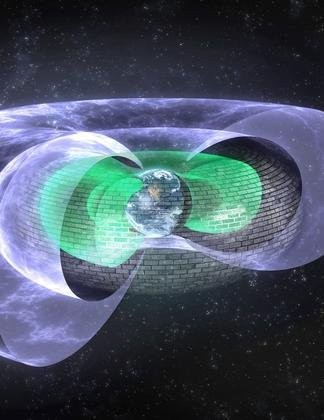Little Known Space Shield Defends Earth from Killer Radiation
| Marco Foronda | | Nov 27, 2014 02:46 AM EST |
(Photo : Andy Kale, University of Alberta/colorado.edu) Scientists have discovered an invisible shield roughly 7,200 miles above the Earth that blocks “killer electrons.”
Scientists have discovered an invisible shield roughly 7,200 miles above the Earth's surface that protects the planet from "killer electrons" flying close to the speed of light.
Researchers from the Massachusetts Institute of Technology and the University of Colorado said the enigmatic invisible "Star Trek"-style shield prevents "ultrarelativistic electrons" located in the outer part of the Van Allen radiation belt from penetrating Earth's atmosphere and frying everything on the surface of the planet.
Like Us on Facebook
The Van Allen radiation belt is a layer of energetic charged particles trapped at high atmospheric altitudes by the Earth's magnetic field. On the other hand, ultrarelativistic electrons are particles circling the Earth, or any other planet with a magnetic field, at a speed very similar to the speed of light, said Professor Daniel Baker, lead study author and director of CU-Boulder's Laboratory for Atmospheric and Space Physics.
"It's almost like these electrons are running into a glass wall in space. Somewhat like the shields created by force fields on Star Trek that were used to repel alien weapons, we are seeing an invisible shield blocking these electrons. It's an extremely puzzling phenomenon," said Prof. Baker.
Researchers obtained data from two NASA spacecraft known as the Van Allen Probes. Data from the two probes reveal the shield tweaks more rapidly than previously thought, with particles in the areas undergoing swift changes in energy, time and spatial distribution.
In 2013, Prof. Baker's team found a third transient "storage ring" between the inner and outer Van Allen belts. The third ring appears to come and go, depending on space weather.
The radiation belts are named after physicist James Van Allen of the University of Iowa. Van Allen discovered the radiation belts in 1958 and is regarded as a pioneer in magnetospheric space research. He died in 2006 at the age of 91.
The new research will be published in the journal Nature this November 27.
Tags‘Star Trek’-style invisible shield, killer electrons, radiation, Star Trek-like Barrier, NASA, space exploration, Van Allen Probes, James Van Allen, radiation belt, ultrarelativistic electrons, physics
©2015 Chinatopix All rights reserved. Do not reproduce without permission
EDITOR'S PICKS
-

Did the Trump administration just announce plans for a trade war with ‘hostile’ China and Russia?
-

US Senate passes Taiwan travel bill slammed by China
-

As Yan Sihong’s family grieves, here are other Chinese students who went missing abroad. Some have never been found
-

Beijing blasts Western critics who ‘smear China’ with the term sharp power
-

China Envoy Seeks to Defuse Tensions With U.S. as a Trade War Brews
-

Singapore's Deputy PM Provides Bitcoin Vote of Confidence Amid China's Blanket Bans
-

China warns investors over risks in overseas virtual currency trading
-

Chinese government most trustworthy: survey
-

Kashima Antlers On Course For Back-To-Back Titles
MOST POPULAR
LATEST NEWS
Zhou Yongkang: China's Former Security Chief Sentenced to Life in Prison

China's former Chief of the Ministry of Public Security, Zhou Yongkang, has been given a life sentence after he was found guilty of abusing his office, bribery and deliberately ... Full Article
TRENDING STORY

China Pork Prices Expected to Stabilize As The Supplies Recover

Elephone P9000 Smartphone is now on Sale on Amazon India

There's a Big Chance Cliffhangers Won't Still Be Resolved When Grey's Anatomy Season 13 Returns

Supreme Court Ruled on Samsung vs Apple Dispute for Patent Infringement

Microsoft Surface Pro 5 Rumors and Release Date: What is the Latest?










